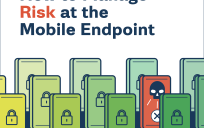The public shift to mobile has been swift and astounding. U.S. citizens now use mobile devices to access the Internet more often than they use desktop computers. Consumers have come to expect information availability 24/7, wherever they are – and that includes the information they need from government agencies.
While it’s still possible that some government agencies don’t need to deliver services on mobile platforms, the only way you’ll know for sure is to evaluate what content and functionality your constituents are using when they visit your website.
Before undertaking a mobile project for your agency, consider:
Different devices serve different needs. The proliferation of devices has increased the complexity of designing mobile-friendly websites. Evaluating the way your constituents are likely to use various devices to access your services or information will give you good insight into the role mobile development should play for your agency. If your customers need to complete long, detailed forms, for example, you probably don’t need to make those services available via mobile. Users are much more likely to complete that kind of task on a PC than on a mobile device.
If, on the other hand, people frequently need to locate your office or get quick, updated information, there’s a high probability they’ll turn to their smartphones. If your services involve reporting data, you may want to focus your mobile design on tablets, which often are the preferred devices for people who are in the field but also need more screen space for data capture than a smartphone allows.
By comparing device features with knowledge about how constituents will access and use services, your agency can decide whether it needs to design for every available device or for a select few.
Mobile is more than just a delivery channel. Mobile offers features and capabilities, such as cameras, GPS technology and Internet access, that your agency can use to enhance how it provides services. After you’ve determined which devices best accommodate delivery of your agency’s services, decide how you can take advantage of the features the selected devices offer. Can you leverage GPS technology, for example, if your users often are in the field? Could using audio features help streamline the receipt or delivery of information?
Getting mobile right the first time. It’s worth conducting research to get an accurate understanding of your customers and how they interact with you online, so the mobile services you end up offering will be what your constituents need. It’s also worth looking at what other agencies have done and discovering what has and hasn’t worked for them.
This measured approach helps you avoid missteps, employ proven practices and ensure that a new mobile service works correctly from the beginning, thus minimizing customer service issues and saving your agency money and time. For example, if users typically look for specific information on your website, it may be best to make that information the first thing they see when they access your site from a mobile device, as opposed to other information, such as a mission statement.
Users and developers will continue to find new, life-changing ways to use mobile technology. It’s here to stay. Government agencies that develop a system of thorough, thoughtful planning and implementation will be well positioned to serve their constituents by taking advantage of current and future mobile opportunities.





Leave a Reply
You must be logged in to post a comment.